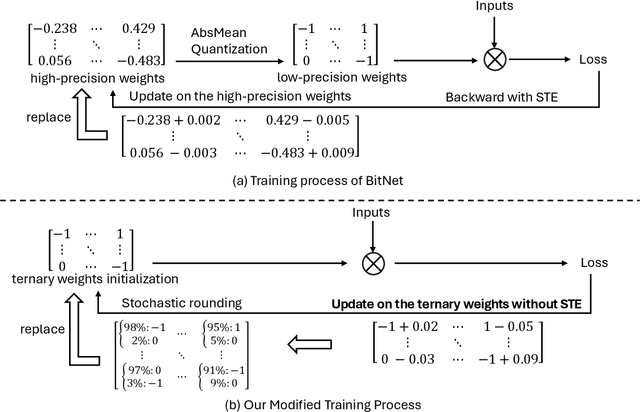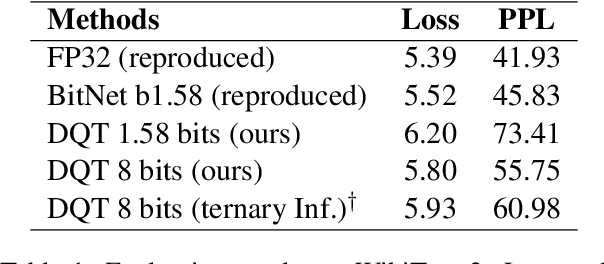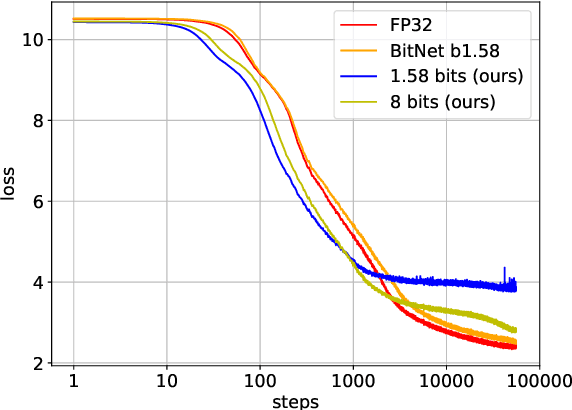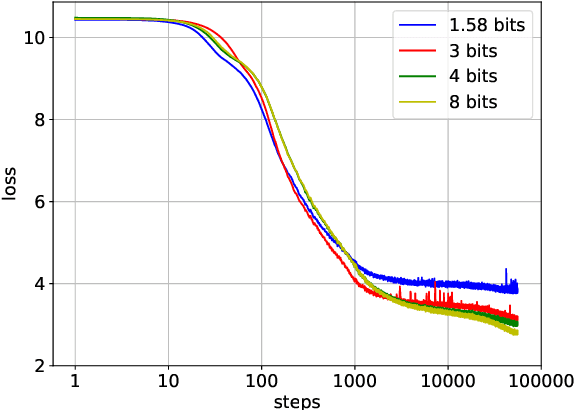Kaiyan Zhao
Improving Multimodal Contrastive Learning of Sentence Embeddings with Object-Phrase Alignment
Aug 01, 2025Abstract:Multimodal sentence embedding models typically leverage image-caption pairs in addition to textual data during training. However, such pairs often contain noise, including redundant or irrelevant information on either the image or caption side. To mitigate this issue, we propose MCSEO, a method that enhances multimodal sentence embeddings by incorporating fine-grained object-phrase alignment alongside traditional image-caption alignment. Specifically, MCSEO utilizes existing segmentation and object detection models to extract accurate object-phrase pairs, which are then used to optimize a contrastive learning objective tailored to object-phrase correspondence. Experimental results on semantic textual similarity (STS) tasks across different backbone models demonstrate that MCSEO consistently outperforms strong baselines, highlighting the significance of precise object-phrase alignment in multimodal representation learning.
Direct Quantized Training of Language Models with Stochastic Rounding
Dec 06, 2024



Abstract:Although recent quantized Large Language Models (LLMs), such as BitNet, have paved the way for significant reduction in memory usage during deployment with binary or ternary weights, training these models still demands substantial memory footprints. This is partly because high-precision (i.e., unquantized) weight matrices required for straight-through estimation must be maintained throughout the whole training process. To address this, we explore the potential of directly updating the quantized low-precision weight matrices without relying on the straight-through estimator during backpropagation, thereby saving memory usage during training. Specifically, we employ a stochastic rounding technique to minimize information loss caused by the use of low-bit weights throughout training. Experimental results on our LLaMA-structured models indicate that (1) training with only low-precision weights is feasible even when they are constrained to ternary values, (2) extending the bit width to 8 bits results in only a 5% loss degradation compared to BitNet b1.58 while offering the potential for reduced memory usage during training, and (3) our models can also perform inference using ternary weights, showcasing their flexibility in deployment.
Efficient Diversity-based Experience Replay for Deep Reinforcement Learning
Oct 27, 2024



Abstract:Deep Reinforcement Learning (DRL) has achieved remarkable success in solving complex decision-making problems by combining the representation capabilities of deep learning with the decision-making power of reinforcement learning. However, learning in sparse reward environments remains challenging due to insufficient feedback to guide the optimization of agents, especially in real-life environments with high-dimensional states. To tackle this issue, experience replay is commonly introduced to enhance learning efficiency through past experiences. Nonetheless, current methods of experience replay, whether based on uniform or prioritized sampling, frequently struggle with suboptimal learning efficiency and insufficient utilization of samples. This paper proposes a novel approach, diversity-based experience replay (DBER), which leverages the deterministic point process to prioritize diverse samples in state realizations. We conducted extensive experiments on Robotic Manipulation tasks in MuJoCo, Atari games, and realistic in-door environments in Habitat. The results show that our method not only significantly improves learning efficiency but also demonstrates superior performance in sparse reward environments with high-dimensional states, providing a simple yet effective solution for this field.
Enhancing LLM Agents for Code Generation with Possibility and Pass-rate Prioritized Experience Replay
Oct 16, 2024



Abstract:Nowadays transformer-based Large Language Models (LLM) for code generation tasks usually apply sampling and filtering pipelines. Due to the sparse reward problem in code generation tasks caused by one-token incorrectness, transformer-based models will sample redundant programs till they find a correct one, leading to low efficiency. To overcome the challenge, we incorporate Experience Replay (ER) in the fine-tuning phase, where codes and programs produced are stored and will be replayed to give the LLM agent a chance to learn from past experiences. Based on the spirit of ER, we introduce a novel approach called BTP pipeline which consists of three phases: beam search sampling, testing phase, and prioritized experience replay phase. The approach makes use of failed programs collected by code models and replays programs with high Possibility and Pass-rate Prioritized value (P2Value) from the replay buffer to improve efficiency. P2Value comprehensively considers the possibility of transformers' output and pass rate and can make use of the redundant resources caused by the problem that most programs collected by LLMs fail to pass any tests. We empirically apply our approach in several LLMs, demonstrating that it enhances their performance in code generation tasks and surpasses existing baselines.
Improving Arithmetic Reasoning Ability of Large Language Models through Relation Tuples, Verification and Dynamic Feedback
Jun 25, 2024



Abstract:Current representations used in reasoning steps of large language models can mostly be categorized into two main types: (1) natural language, which is difficult to verify; and (2) non-natural language, usually programming code, which is difficult for people who are unfamiliar with coding to read. In this paper, we propose to use a semi-structured form to represent reasoning steps of large language models. Specifically, we use relation tuples, which are not only human-readable but also machine-friendly and easier to verify than natural language. We implement a framework that includes three main components: (1) introducing relation tuples into the reasoning steps of large language models; (2) implementing an automatic verification process of reasoning steps with a local code interpreter based on relation tuples; and (3) integrating a simple and effective dynamic feedback mechanism, which we found helpful for self-improvement of large language models. The experimental results on various arithmetic datasets demonstrate the effectiveness of our method in improving the arithmetic reasoning ability of large language models. The source code is available at https://github.com/gpgg/art.
Enhancing Cross-lingual Sentence Embedding for Low-resource Languages with Word Alignment
Apr 03, 2024Abstract:The field of cross-lingual sentence embeddings has recently experienced significant advancements, but research concerning low-resource languages has lagged due to the scarcity of parallel corpora. This paper shows that cross-lingual word representation in low-resource languages is notably under-aligned with that in high-resource languages in current models. To address this, we introduce a novel framework that explicitly aligns words between English and eight low-resource languages, utilizing off-the-shelf word alignment models. This framework incorporates three primary training objectives: aligned word prediction and word translation ranking, along with the widely used translation ranking. We evaluate our approach through experiments on the bitext retrieval task, which demonstrate substantial improvements on sentence embeddings in low-resource languages. In addition, the competitive performance of the proposed model across a broader range of tasks in high-resource languages underscores its practicality.
Leveraging Multi-lingual Positive Instances in Contrastive Learning to Improve Sentence Embedding
Sep 16, 2023Abstract:Learning multi-lingual sentence embeddings is a fundamental and significant task in natural language processing. Recent trends of learning both mono-lingual and multi-lingual sentence embeddings are mainly based on contrastive learning (CL) with an anchor, one positive, and multiple negative instances. In this work, we argue that leveraging multiple positives should be considered for multi-lingual sentence embeddings because (1) positives in a diverse set of languages can benefit cross-lingual learning, and (2) transitive similarity across multiple positives can provide reliable structural information to learn. In order to investigate the impact of CL with multiple positives, we propose a novel approach MPCL to effectively utilize multiple positive instances to improve learning multi-lingual sentence embeddings. Our experimental results on various backbone models and downstream tasks support that compared with conventional CL, MPCL leads to better retrieval, semantic similarity, and classification performances. We also observe that on unseen languages, sentence embedding models trained on multiple positives have better cross-lingual transferring performance than models trained on a single positive instance.
 Add to Chrome
Add to Chrome Add to Firefox
Add to Firefox Add to Edge
Add to Edge